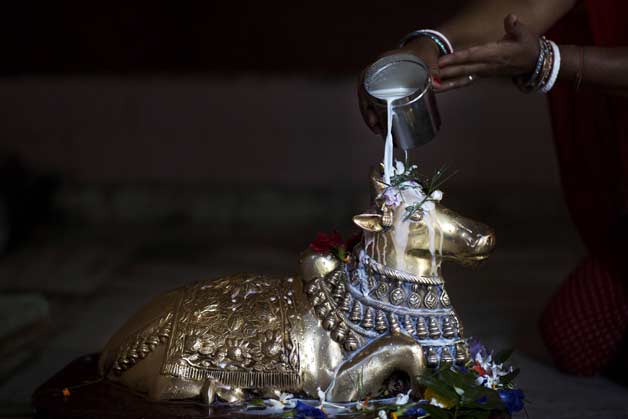
New Delhi: It is the world's largest producer of milk and also the largest consumer. And for good reason. Because in India, milk is not just the morning glass you drink before you sprint out of the house. Its uses go far beyond the dietary and nutritional.
By the end of 2014, India was producing 140 million metric tons of milk per year — roughly 50 percent more than the United States, the second-biggest producer.
Milk's special significance in India goes back to Hindu mythology and the legend of the Samudra manthan, the churning of the ocean that brought forth the drink of immortality, the amrit, and also the goddess Kamdhenu, which manifested itself as a wish-granting divine cow. Hindus, who make up 81 percent of India's 1.3 billion people, consider cows to be sacred embodiments of Kamdhenu.
.jpg )
Krishna worshippers have special affection for cows because of the Hindu god's role as a cowherd. Stories about his love of butter are legendary, so much so that he is lovingly called "Makhan chor," or butter thief.
Hindus use milk and its products for religious purposes because it is believed to have purifying qualities: ghee, or clarified butter, is used in lamps for rituals; milk is used to bathe Hindu idols on special occasions; sweets made from milk or ghee are used as offerings to gods. It accompanies so much of Hindu life, in rituals from an infant's first food to the last rituals after death.

Milk also transcends religion: Ghee spread on flatbread can be a special treat for the poor; buttermilk is a popular summer drink to soothe the stomach. If you are in India, you cannot escape calorie-filled sweets made with milk. Another thing common across this large and diverse country is the morning cup of milky tea; tiny tea stalls start their businesses early, with migrant laborers normally the first customers.
The dairy industry became the force it is today because of major changes decades ago. Amul, a co-operative dairy, was born in 1946 out of a revolt by milk producers against unfair trade practices, and now has 3.37 million members. Amul was a model for Operation Flood, a nationwide campaign to increase milk production that began in 1970.
Many dairy operations are quite small. In a rural corner of India's northeastern Indian state of Assam, 24-year-old Srimoti Mandal milks her three cows in the early morning, getting an average of about 6 liters per day and selling it for about $3.50. With her husband unable to work because of asthma, she depends on the milk to support her family of four, which includes two young children.
In a neighboring village, a bent Pronoti Devi, 67, supplies milk from her three cows daily to a tea shop.
At 4:30 a.m., the New Delhi train station is bustling with milkmen from surrounding towns who arrive carrying cans of milk that they deliver to neighborhoods across the capital. Most were up hours before the sun's first rays. Some will make a second trip before the day ends. And then they will return to feed the cattle that in turn help feed their families.






















